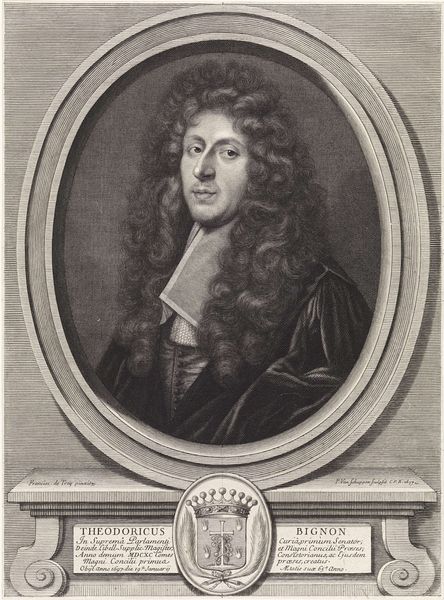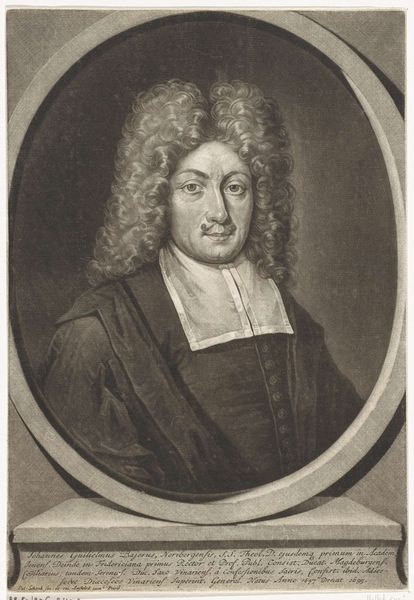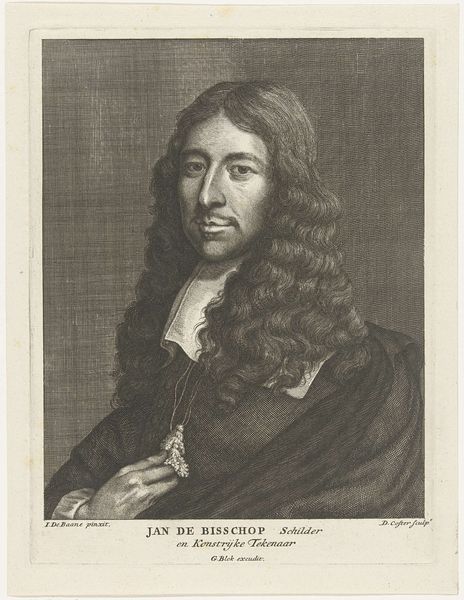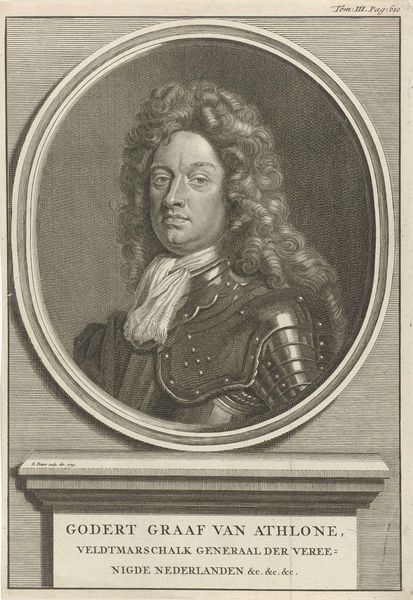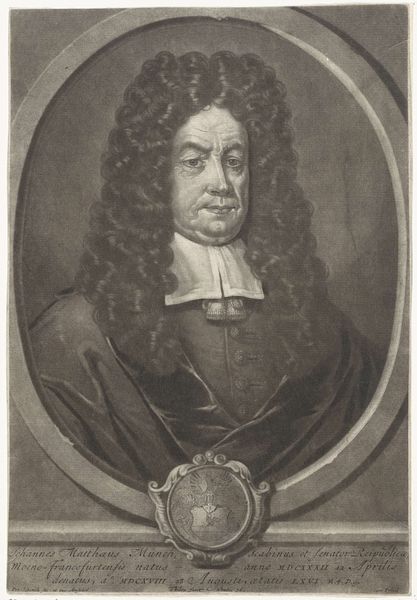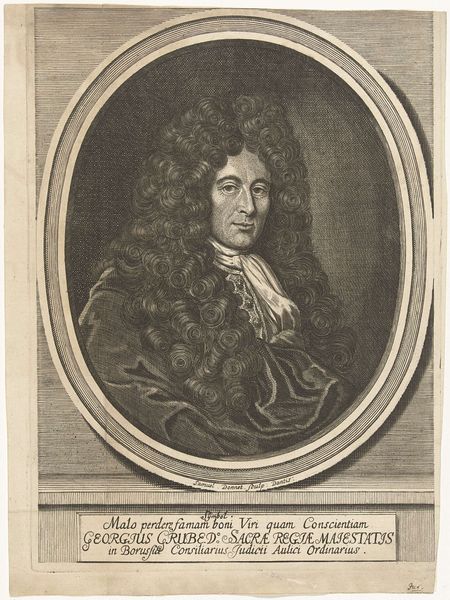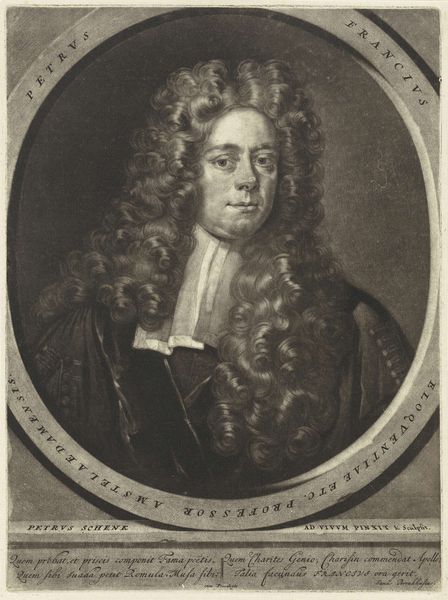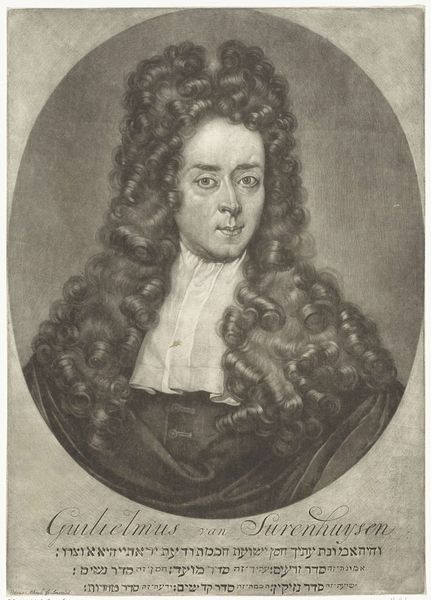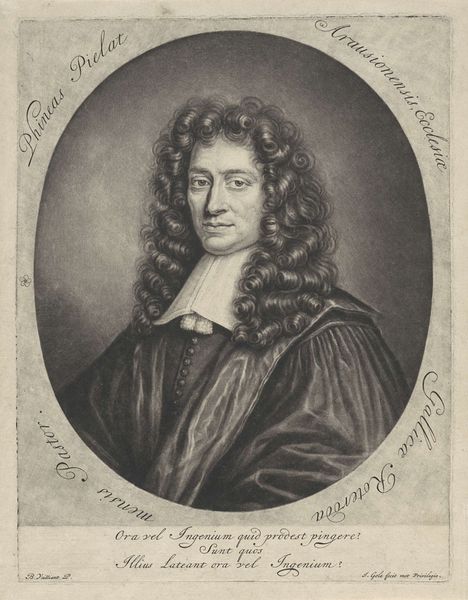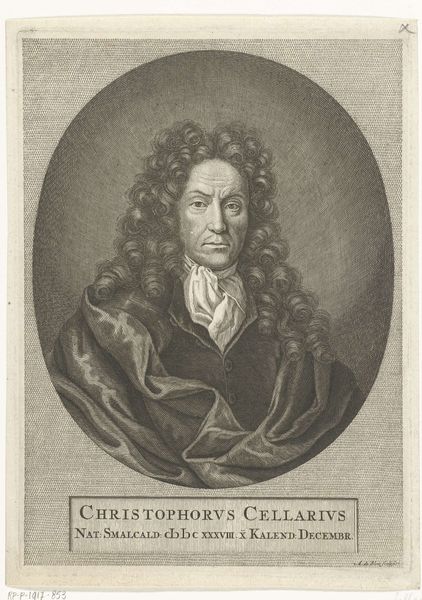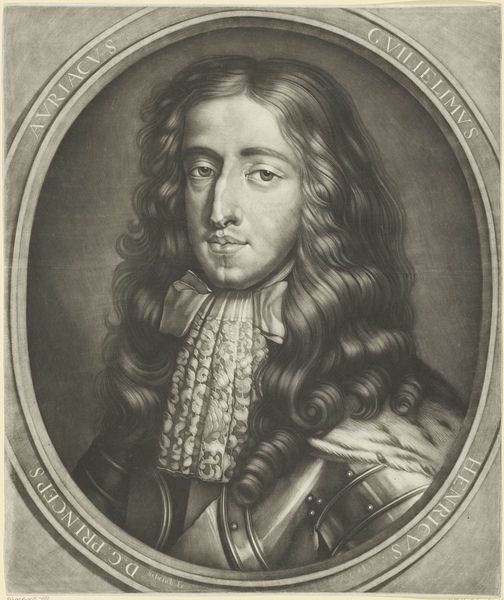
print, engraving
#
portrait
#
baroque
# print
#
charcoal drawing
#
historical photography
#
portrait drawing
#
history-painting
#
engraving
Dimensions: height 240 mm, width 184 mm
Copyright: Rijks Museum: Open Domain
Curator: We are standing before a print entitled "Portret van Jan Antonides van der Goes," made sometime between 1670 and 1713 by Pieter Schenk. It resides here at the Rijksmuseum. Editor: The contrast between light and dark really grabs you, doesn't it? The textures—from the hair to the rough sea beyond—they almost feel palpable. It projects a very strong sense of… ambition. Curator: Indeed. Note the careful deployment of chiaroscuro. Schenk has orchestrated the tonalities masterfully, framing Antonides’ face and hands in such a way to really dramatize his presence. The engraving itself is expertly crafted. Editor: Thinking about that craftsmanship—the time, the skill involved in creating these fine lines, makes you appreciate the artisanal aspect of the print medium during that period. These prints were circulated widely, essentially democratizing access to portraits of prominent figures. The choice of materials—copper, ink, paper—each carrying its own history of production. How fascinating. Curator: I concur. The formal elements all seem in service to a highly developed rhetoric of power and intellect. Observe how the swirling composition within the oval format subtly reinforces the dynamism and grandeur of the Baroque. Editor: But that ocean scene visible beyond Antonides shoulders also intrigues me. What do you think it adds to the reading of the print? I mean what do we really know about paper manufacturing in that era and how would these materials been regarded? I want to delve deep into that maritime economy, into the human networks it implies... Curator: A relevant addition; although formally speaking it establishes spatial depth within the portrait. Ultimately, one can appreciate the image both through considering its overt representational agenda and the complex ways it utilizes various design components and their compositional balance. Editor: It's this convergence of material reality and symbolic representation that makes the print so compelling. Thanks. Curator: Thank you.
Comments
No comments
Be the first to comment and join the conversation on the ultimate creative platform.


